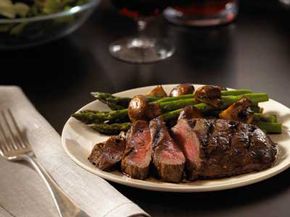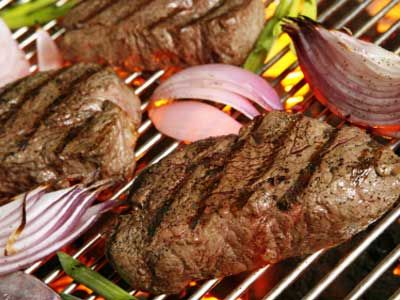For the backyard chef and the experienced foodie alike, nothing means luxury like a fine steak, with melt-in-your-mouth tenderness and rich flavor.
Although "steak" can designate the meat of several different animals, in the U.S. it almost invariably means beefsteak. Steak comes in a variety of cuts and grades, and it also offers a surprising range of flavors and textures. Some of these qualities depend on preparation; others depend on how the cow was raised and when it was slaughtered.
Advertisement
Typically to make a steak, the meat is butchered in cross-section -- the cut is perpendicular to the muscle fibers, or grain [source: Oklahoma State University]. The meat is marbled -- that is, it contains a certain amount of fat. In many cases, marbling leads to tenderness and flavor [source: Chu]. There is some debate about the quality of marbling, as well as the relationship between marbling and the diet of the cow [source: Time].
For anyone who used to struggle with the spelling difference between "stake" and "steak," it should come as a comfort to learn that the words are actually related. "Steak" comes from a root meaning "to roast on a stake" [source: Merriam-Webster]. That's not the only way to cook a steak any more, but there's still something a bit primal about a perfect cut of beef. We do tend to associate steak with cowboys and manly men, and indeed, the United States leads the world in beef consumption -- just under 70 pounds (31.75 kg) per person, per year [source: Cattle Network]. By contrast, the figure is about 19 pounds (8.7 kg) in Japan -- less than one-third as much [source: AsiaKan]!
In this article, we'll look at the different varieties and cuts of steak on the market today. You'll also learn some facts and opinions on the all-important topic of cooking steak. But first, let's head over to the farm, for a look at how cattle-raising methods affect flavor.
Advertisement


